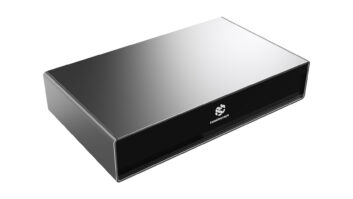ARLINGTON, VA. — It’s not just another device that gets tucked away in a drawer, that’s for sure.
Two studies released last month confirm what most of the industry has been buzzing about: 3D printing is burgeoning category worth hitching a cart to. Three-quarters of 3D-printer owners use their printers daily or several times a week, according to the “Eye on Emerging Technology: 3D Printing” study from the Consumer Electronics Association. Only 18 percent of 3D printer owners reported using their 3D printer once a week, and 7 percent said they use it one or two times a month.
“3D printing is an emerging technology that has the potential to change the world,” said Steve Koenig, CEA industry analysis director, in a statement. “As 3D printers evolve with new inputs, features and lower prices, they could transform the consumer landscape — much like MP3 players impacted the music industry.”
Gartner echoed this sentiment with its own study last week, citing lower prices, improved performance and expanded global availability as key driving factors for the consumer market.
According to CEA’s “U.S. Consumer Electronics Sales and Forecast,” 3D printers will bring in $76 million in total revenue in 2014 in the U.S., which is up 44 percent over last year. The category will earn $121 million worldwide this year, CEA said. Gartner said worldwide shipments will reach 217,350 units in 2015, up from 108,151 in 2014.
Looking ahead, CEA predicted double-digit growth in U.S. unit shipments through 2018, generating $175 million in total revenue, with a compound annual growth rate of up to 37.1 percent through 2018. Gartner forecast shipments more than doubling every year between 2015 and 2018, with shipments reaching more than 2.3 million by the end of this period.
Koenig cited rising consumer demand, technological development and greater competition as category growth drivers. He added: “Revenue from sales is unlikely to grow as quickly as unit sales, though, as increased competition and market segmentation are likely to cause a drop in prices — a win for the consumer.”
Gartner cautioned that consumers shouldn’t expect average selling prices to plummet too quickly. “Manufacturers will strive to add features and improve performance in the first few years rather than reduce the prices of printers,” said Pete Basiliere, Gartner research VP. “Therefore, the ASPs of a few technologies are expected to increase or to gradually decrease in the outer years after an increase in 2014 or 2015.”
Consumer familiarity of the category is growing, but more work remains to be done. Twenty-three percent of online U.S. adults reported being familiar with the technology, but 51 percent said they were unfamiliar in CEA’s study.
Retail support of the category is anticipated to bring benefits for both sides. “We expect consumer familiarity with 3D printers to grow as more and more large retailers begin to carry the devices,” said Koenig. “This is great for retailers as it creates an ‘attraction’ for consumers to come see 3D printers in action in the store.”
Consumers are most interested in using 3D printers to create items such as household goods (52 percent), smartphone cases (51 percent), jewelry (49 percent), clothing (48 percent) and toys (45 percent), according to CEA.













